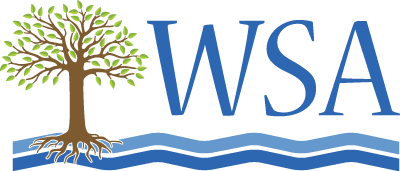August’s Native Maryland Plant
Monarda punctata L.
(mo-NAR-da punk-TAH-tah)
Common Name: Spotted Beebalm
Monarda punctata is the second mint to be highlighted this ‘Year of the Mints’¹. Maryland’s native mints are tremendous pollinator plants that, in general, share the distinction of having a fragrance that deters deer. This mint, Monarda punctata, has a far-reaching native range, a long bloom period, and a showy appearance that makes it especially valuable in a pollinator garden. Meeting its growing conditions is the key to having it thrive and reseed – dry, sandy soil in full sun is where this plant will shine.
When in bloom Monarda punctata is worth a closer look. Its spotted flower petals are enhanced by the very conspicuous pinkish bracts that give the appearance of a flower in bloom - long past its flowering period.
Monarda species support many specialized bees (bees that require specific pollen), they are the larval host for several moths, and they attract beneficial wasps – animals that control insect pest populations. This means the plant helps increase plant, pollinator, and bird diversity while also providing integrated pest management (IPM) – a real win-win in any garden.
In case you missed it: On July 21st, 2022, the migratory Monarch (Danaus plexippus plexippus) was added to the endangered species list: https://www.iucn.org/. Just two days later a female Monarch came to my garden to lay her eggs. Just barely hanging on to a Swamp milkweed (Asclepias incarnata) she seemed to be sending me a message, ‘Do more’.
I really do hope you plant a native mint in your garden – there are many good options. I also hope you find room for a native milkweed (Asclepias); preferably one of these three: incarnata, syriaca or tuberosa. Keep in mind, that to complete their migration Monarchs will also need fall blooming plants.
Visit WSA’s RePollinate site to apply for some native milkweed for your garden – they’re free!2 If we all ‘do more’, then this iconic butterfly and many others will do more than just barely hang on.
1 MD Native Plant Society: https://mdflora.org/resources/Publications/Marilandica/Marilandica_Fall_2021.pdf
2 WSA accepts donations, or you can volunteer to help the RePollinate program
Alison Milligan – MG/MN 2013
Watershed Steward Class 7, CBLP, AA County Tree Trooper












